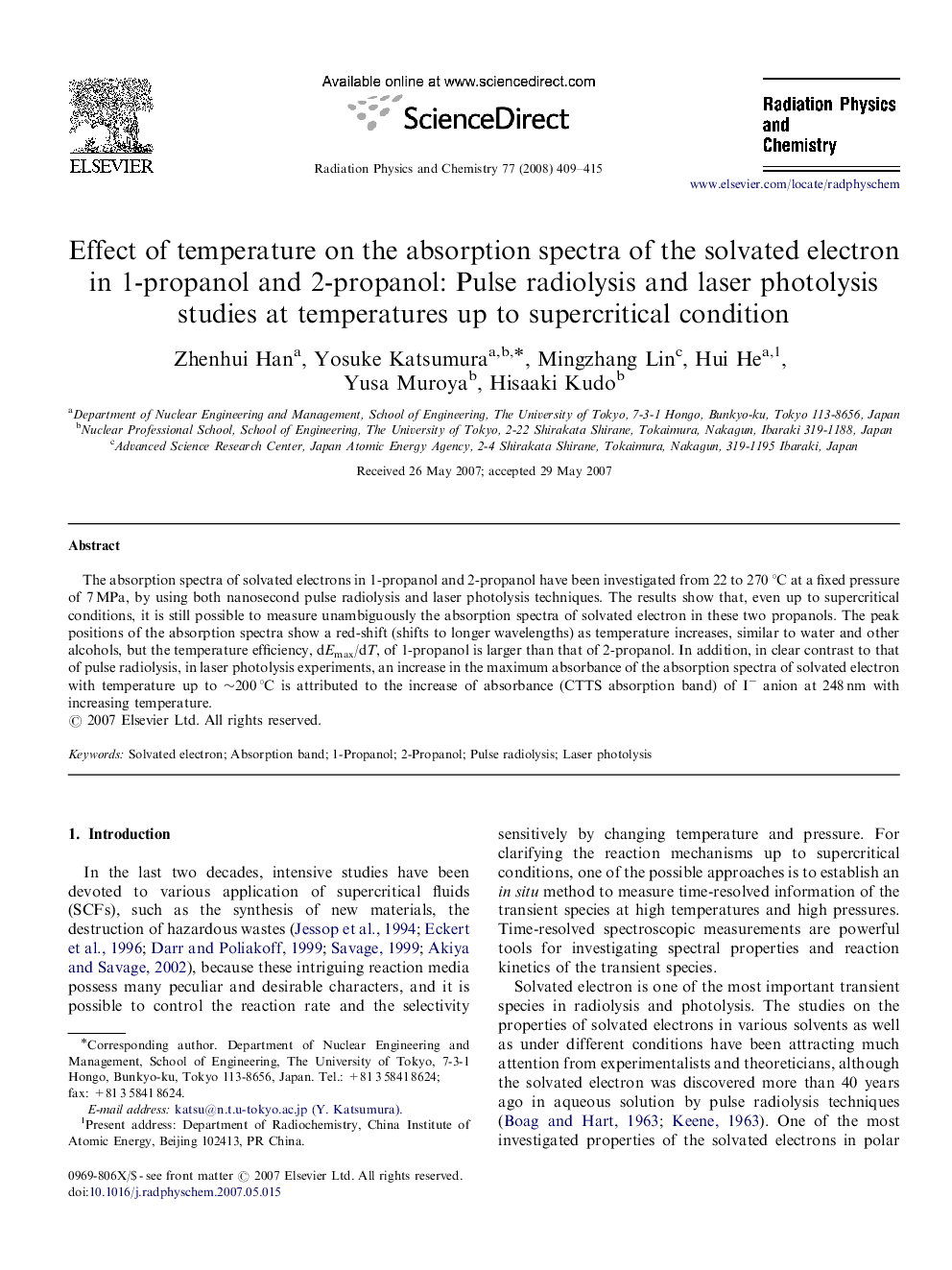| Article ID | Journal | Published Year | Pages | File Type |
|---|---|---|---|---|
| 1887112 | Radiation Physics and Chemistry | 2008 | 7 Pages |
The absorption spectra of solvated electrons in 1-propanol and 2-propanol have been investigated from 22 to 270 °C at a fixed pressure of 7 MPa, by using both nanosecond pulse radiolysis and laser photolysis techniques. The results show that, even up to supercritical conditions, it is still possible to measure unambiguously the absorption spectra of solvated electron in these two propanols. The peak positions of the absorption spectra show a red-shift (shifts to longer wavelengths) as temperature increases, similar to water and other alcohols, but the temperature efficiency, dEmax/dT, of 1-propanol is larger than that of 2-propanol. In addition, in clear contrast to that of pulse radiolysis, in laser photolysis experiments, an increase in the maximum absorbance of the absorption spectra of solvated electron with temperature up to ∼200 °C is attributed to the increase of absorbance (CTTS absorption band) of I− anion at 248 nm with increasing temperature.
